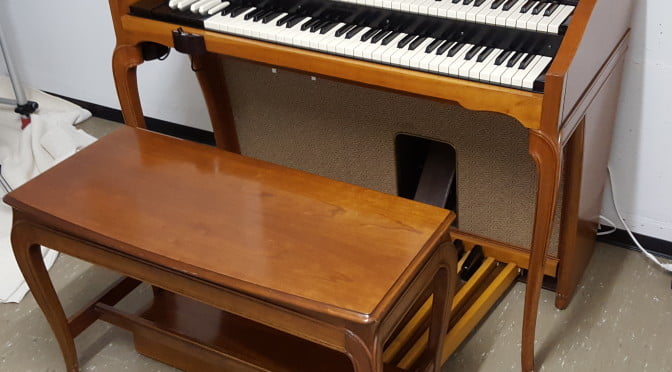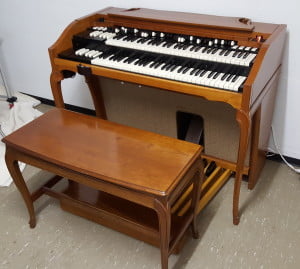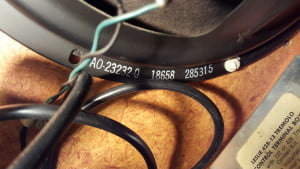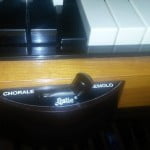The Hammond tone-wheel organ was invented by Laurens Hammond in 1935. The Leslie tone cabinet was built by Don Leslie in 1940. “Leslies” are speaker cabinets made of solid wood with louvres to let the sound out of the top and bottom of the cabinet and with two rotors that spin and project the sound out into the surrounding space. In essence they are sound modification devices, more like musical instruments than speakers, designed to add to the sound of an instrument by introducing a 3D Doppler effect.
Apparently Don Leslie offered his speaker and cabinet design to Laurens Hammond, but this gentleman didn’t like the sound of a Hammond through a Leslie at all. Hammond dealers were prohibited from selling them in the early days.
Even without advertising, the Leslie was much appreciated and increasingly used by organ players, and by the mid-50s what most people considered to be the Hammond organ sound was actually the sound of a Hammond organ amplified by a Leslie tone cabinet.
The moving sound of this winning combination has something special about it. And it still moves players and listeners alike.
The Hammond and Leslie brands continue on today and are owned by Hammond Suzuki USA. To the aficionado, the original organs, the best known of which are the B3, C3 and A-100, are still the greatest and there is a thriving market for vintage Hammond organs – and Leslies sixty years after they were first introduced.
Recording a Lesie is an art in itself, and there are may ways of approaching it. There’s a nice article on some of the options for doing this on the Shure website, Miking the Legendary Leslie Tone Cabinet. More information can be found at how do you record a Leslie speaker and Miking the Hammond and Leslie.
Another cool video, which shows footage of a clinic on recording the Hammond:















